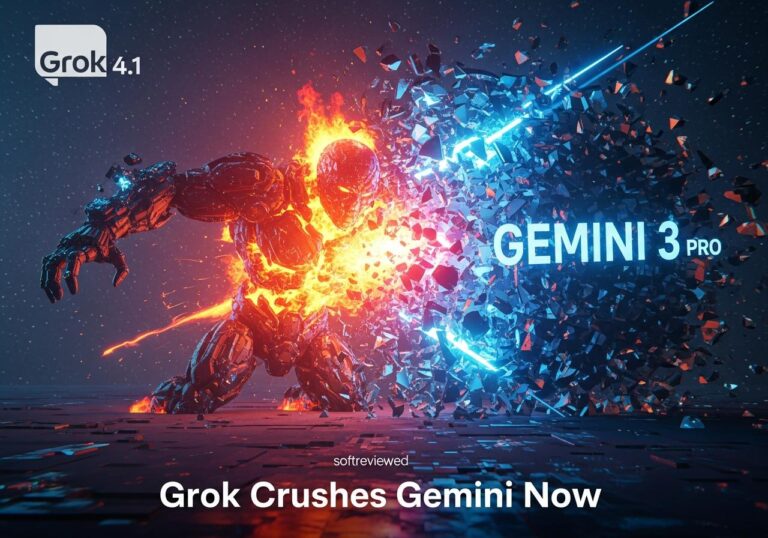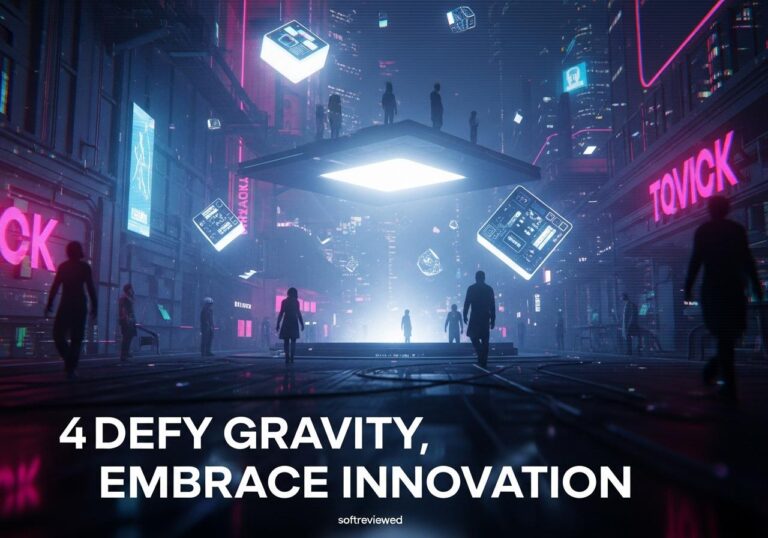ChatGPT Agent Builder: No-Code AI Development
Empowering everyone to create powerful AI agents without technical expertise
Drag-and-Drop Visual Interface
Build AI agents using a visual canvas with connectable nodes – no coding experience required. Simply drag, connect, and deploy sophisticated AI workflows with intuitive visual tools.
Pre-Built Templates for Instant Deployment
Production-ready templates for customer service bots, data enrichment, Q&A agents, and document comparison reduce time-to-production from weeks to hours. Start with proven solutions and customize to your needs.
Universal Integration Through MCP
Connect with Gmail, Google Calendar, Google Drive, Outlook, SharePoint, and third-party services through Model Context Protocol. Seamlessly integrate your AI agents with the tools you already use.
Dramatic Development Speed Increases
75% less time to develop workflows, 70% reduction in iteration cycles, and 40% faster evaluation timelines. Build and refine AI solutions in hours instead of weeks or months.
Enterprise-Grade Security Built-In
Includes prompt injection protection, content moderation, and other security guardrails that previously required custom implementation. Deploy with confidence knowing your AI agents are secure by design.
Democratizes AI Agent Creation
800 million ChatGPT users gain access to professional-grade agent building capabilities without technical expertise. The power of advanced AI development is now available to everyone.
Visual AI Creation Made Simple: OpenAI’s Game-Changing Agent Builder
OpenAI has officially launched Agent Builder at DevDay 2025, marking a pivotal shift from complex coding to visual AI development. This comprehensive platform allows anyone to create sophisticated AI agents through a simple drag-and-drop interface, directly challenging established automation platforms like n8n and Zapier while making AI development accessible to 800 million ChatGPT users worldwide.
What Makes Agent Builder Revolutionary
Agent Builder represents OpenAI’s most significant platform expansion since ChatGPT’s initial release. The tool transforms AI agent development from a technical coding exercise into an intuitive visual workflow design process. Users can now create production-ready AI agents by simply dragging components onto a canvas and connecting them with arrows, similar to creating a flowchart.
The platform emerges as part of AgentKit, OpenAI’s comprehensive toolkit that includes three core components:
📌 Agent Builder: Visual canvas for workflow creation
📌 ChatKit: Embeddable chat interface toolkit
📌 Connector Registry: Centralized tool and data connection management
Christina Huang from OpenAI demonstrated the platform’s capabilities during the DevDay presentation, showcasing how users can build a complete travel agent workflow in minutes. The demonstration included creating specialized routing agents, implementing conditional logic, and integrating web search capabilities—all without writing a single line of code.
Core Features and Capabilities
Visual Workflow Canvas
The heart of Agent Builder lies in its intuitive drag-and-drop interface. Users start with a blank canvas or choose from pre-built templates designed for common business scenarios. The visual approach eliminates traditional barriers to AI development, allowing non-technical users to conceptualize and implement complex agent workflows.
The canvas supports various node types:
- Logic Nodes: If-else conditions, loops, and routing decisions
- Agent Nodes: Individual AI agents with specific instructions and tools
- Tool Nodes: External API integrations and built-in OpenAI tools
- Connector Nodes: MCP-based integrations with popular services
- Guardrail Nodes: Security and safety validation components
Pre-Built Templates and Use Cases
Agent Builder launches with several professionally designed templates:
✅ Customer Service: Automated support ticket resolution with escalation logic
✅ Data Enrichment: Information enhancement workflows for lead generation
✅ Document Comparison: Automated analysis and difference highlighting
✅ Q&A Agents: Knowledge base query systems with natural language processing
These templates serve as starting points that users can customize based on specific business requirements, significantly reducing development time from weeks to hours.
Advanced Integration Capabilities
The platform’s strength lies in its extensive integration ecosystem. Through the Model Context Protocol (MCP), Agent Builder connects seamlessly with popular business tools including Gmail, Google Calendar, Google Drive, Microsoft Outlook, SharePoint, Teams, and Dropbox.
This connectivity enables agents to perform real-world tasks such as:
- Reading and responding to emails automatically
- Scheduling meetings based on availability
- Processing documents and extracting key information
- Creating reports by combining data from multiple sources
Technical Architecture and Implementation
Built on Proven APIs
Agent Builder operates on OpenAI’s Responses API and Agents SDK, both battle-tested platforms supporting hundreds of thousands of developers. This foundation ensures reliability, scalability, and seamless integration with existing OpenAI services.
The platform supports multiple AI models, including GPT-4o, GPT-4o-mini, and future releases. Users can adjust reasoning effort levels and output formats (text or JSON) based on specific workflow requirements.
Security and Guardrails
Enterprise-grade security features are built into every aspect of Agent Builder:
⛔️ Prompt Injection Protection: Automatically detects and blocks malicious input attempts
⛔️ Content Moderation: Ensures outputs comply with safety standards
⛔️ Input/Output Validation: Configurable checks for data quality and format compliance
⛔️ Access Controls: Role-based permissions for team collaboration
These guardrails operate in parallel with agent workflows, providing real-time protection without impacting performance.
Testing and Deployment
The platform includes comprehensive testing capabilities through its built-in preview mode. Users can simulate conversations and workflows before publishing, ensuring agents perform correctly across various scenarios.
Deployment options include:
- Direct integration via workflow ID
- Embedded chat interfaces using ChatKit
- API-based implementations using the Agents SDK
Agent Builder vs Established Platforms
Comparison with n8n
n8n has established itself as a powerful open-source automation platform, particularly popular among technical teams. However, Agent Builder offers several distinct advantages:
| Feature | Agent Builder | n8n |
|---|---|---|
| AI Integration | Native GPT-4o integration with reasoning | Requires external API setup |
| Learning Curve | Minimal – visual drag-and-drop | Steeper – requires JSON knowledge |
| Built-in Tools | Web search, file search, computer use | Custom HTTP requests needed |
| Templates | AI-optimized business templates | General automation templates |
| Cost Model | Included with OpenAI usage | Free self-hosted, €20+/month cloud |
Zapier Competition Analysis
Zapier dominates the no-code automation space with over 5,000 integrations. Agent Builder positions itself as an AI-native alternative:
| Capability | Agent Builder | Zapier |
|---|---|---|
| AI Capabilities | Advanced reasoning and decision-making | Basic AI actions only |
| Workflow Complexity | Multi-agent orchestration | Linear step-by-step automation |
| User Base | 800M+ ChatGPT users | Smaller business-focused audience |
| Integration Depth | Deep AI model integration | Broader app ecosystem |
| Pricing Approach | Model usage-based | Task execution-based |
Real-World Applications and Use Cases
Customer Support Automation
Organizations can create sophisticated support agents that handle initial customer inquiries, route complex issues to human agents, and maintain context across multiple interaction channels. The travel agent demonstration showed how these systems can integrate web search, maintain conversation history, and provide rich interactive responses through custom widgets.
Business Process Optimization
Agent Builder excels in automating repetitive business processes. For example, a document processing workflow might automatically extract key information from uploaded files, validate data against business rules, and route approvals to appropriate stakeholders—all while maintaining audit trails and compliance standards.
Lead Generation and Sales Support
Sales teams can build agents that qualify leads automatically, schedule follow-up meetings, and personalize outreach based on prospect behavior and preferences. The platform’s integration with CRM systems ensures seamless data synchronization across the entire sales pipeline.
Pricing and Value Proposition
Agent Builder’s pricing follows OpenAI’s existing usage-based model rather than traditional seat-based or execution-based billing common among competitors. This approach offers several advantages:
👉 Predictable Costs: Pay only for actual AI model usage
👉 No Per-User Fees: Unlimited team members can build and modify workflows
👉 Included Infrastructure: No separate hosting or maintenance costs
Early reports suggest operational costs ranging from $30-120 monthly for moderate usage, significantly lower than comparable enterprise automation platforms when factoring in development time savings and reduced technical maintenance requirements.
Getting Started with Agent Builder
Account Setup and Access
Agent Builder is available through the OpenAI platform at platform.openai.com/agent-builder. Users need an active OpenAI account with API access to begin building workflows.
First Workflow Creation
New users should start with pre-built templates to understand the platform’s capabilities before creating custom workflows. The customer service template provides an excellent starting point, demonstrating agent routing, tool integration, and response customization.
Best Practices for Success
✅ Start Simple: Begin with single-purpose agents before building complex multi-agent systems
✅ Test Thoroughly: Use preview mode extensively to validate workflow behavior
✅ Implement Guardrails: Always include safety and validation components
✅ Monitor Performance: Leverage built-in tracing and evaluation tools
✅ Iterate Gradually: Add complexity incrementally based on user feedback
Future Implications and Industry Impact
Democratization of AI Development
Agent Builder represents a fundamental shift in AI accessibility. By removing technical barriers, OpenAI enables millions of business users to create AI solutions without extensive development resources. This democratization could accelerate AI adoption across industries previously underserved by technical AI implementations.
Competitive Market Dynamics
The platform’s launch intensifies competition in the automation space, potentially disrupting established players like n8n, Zapier, and Make.com. OpenAI’s massive user base and integrated AI capabilities provide significant competitive advantages, though existing platforms maintain strengths in specific integration ecosystems and pricing models.
Enterprise Adoption Trends
Early enterprise feedback suggests strong interest in Agent Builder’s ability to reduce AI development timelines from months to weeks. Organizations appreciate the visual development approach, built-in security features, and seamless integration with existing OpenAI implementations.
Looking Ahead: The Future of Visual AI Development
Agent Builder marks the beginning of a new era in AI development where visual interfaces replace complex coding requirements. As the platform evolves, we can expect expanded template libraries, deeper integration capabilities, and enhanced collaborative features for team-based development.
The success of Agent Builder will likely influence other AI providers to develop similar visual development tools, ultimately making AI agent creation as common as creating presentations or spreadsheets. For businesses and individuals looking to leverage AI capabilities without technical complexity, Agent Builder provides an unprecedented opportunity to transform operations through intelligent automation.
Organizations should evaluate Agent Builder against their current automation needs, considering factors like existing technical capabilities, integration requirements, and long-term AI strategy. The platform’s visual approach, combined with OpenAI’s robust AI models and security features, positions it as a compelling choice for teams seeking to implement AI solutions quickly and reliably.







